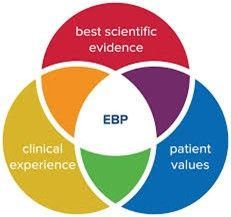3 Ways to Improve Clinical Interventions
Clinical interventions are difficult to target for each client, but there are some ways to improve them.
The challenges most clinicians have in improving treatment outcomes are twofold. First, as much experience as a clinician has, they still have a limited repertoire of strategies available. Usually, it’s what they’ve used in the past. Second, with the pressures of large caseloads and demands on productivity, even if the clinician wants to research treatment modalities they have little time. Subsequently, it is common that clinicians use the same methods for their clients regardless of the client’s diagnosis or chief complaints.
Yet clinicians can sharpen their skills by following these three steps:
1. Identify the chief problem. Although this seems obvious, often clinicians get bogged down in too many problems or crises. The clinician when working with the client needs to specify the main problem behavior upon which to work. This problem should be the one that creates the most symptom reduction and improves the client’s functioning. Problems such as suicidal thoughts, distraction, unprovoked anger, fear of certain environments. These are examples of the types of details the clinicians work on.
2. Reverse the problem into the solution. Once determining the problem, the clinician goes to the opposite end of the behavior continuum. For example, if the problem is that the client runs away from their foster home, then the goal is to reduce these events. The clinician can then think about what this change would look like and what would replace the events. Less frequency, amount of time, reducing running to risky places would also be solutions. Then the clinician identifies with the client what would replace these behaviors. If the client didn’t run away, what would they be doing instead? Talking their problems through, helping others, engaged in positive activities as examples.
3. Inner or Outer Change? The clinician finally reviews with the client whether they need to modify their internal thoughts and feelings, alter their outward behaviors, or both. In the example here, the client can identify their stressor and feelings, then verbalize when they are feeling stressed or learn better ways to talk to others. Maybe writing down their level of stress at certain times of the day to be more aware of their emotions. Or learning how to socialize with their family or peers may benefit them. Plus for outer change, they find ways to channel frustration in physical activities, hobbies, mindfulness, and learning to tolerate stressful situations.
From these interventions, the clinician can then elaborate on more specific strategies for the client. Games, role-playing, listing strengths, or relaxation techniques are modes of making these changes. The more the clinician uses these options, the more they develop their tool kit.
If you want to learn more about how our software Apogee offers these improved interventions, please contact us.




